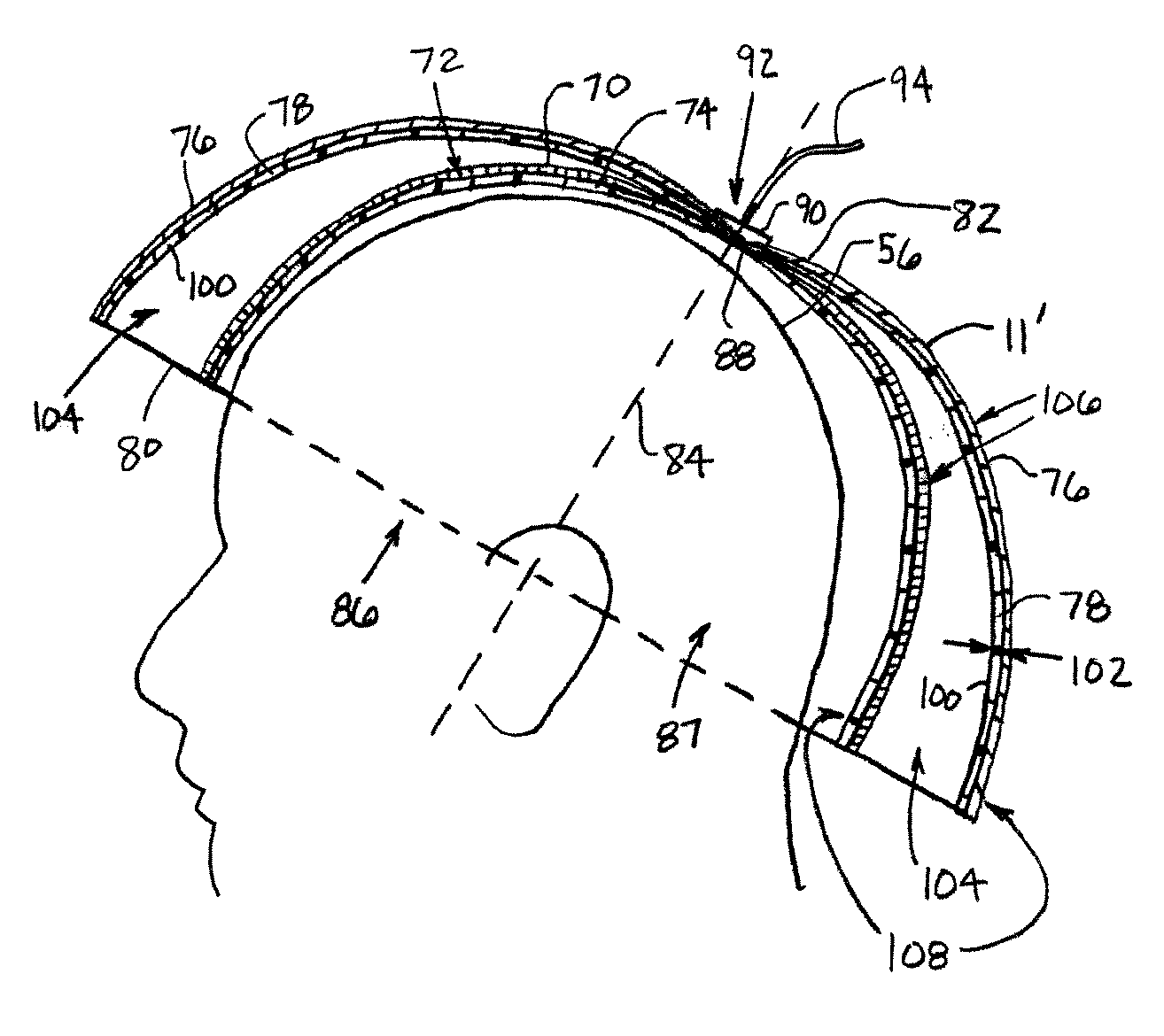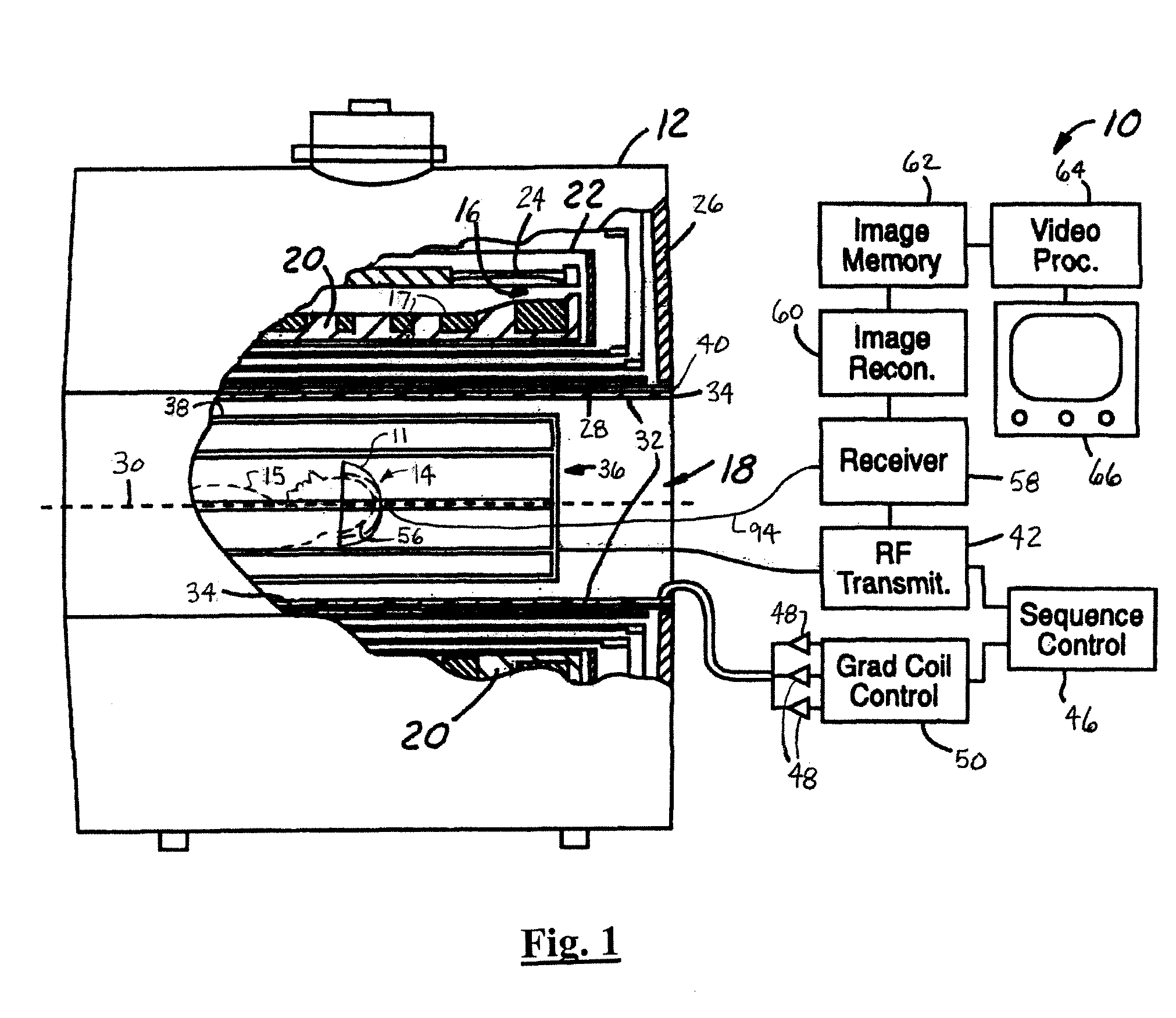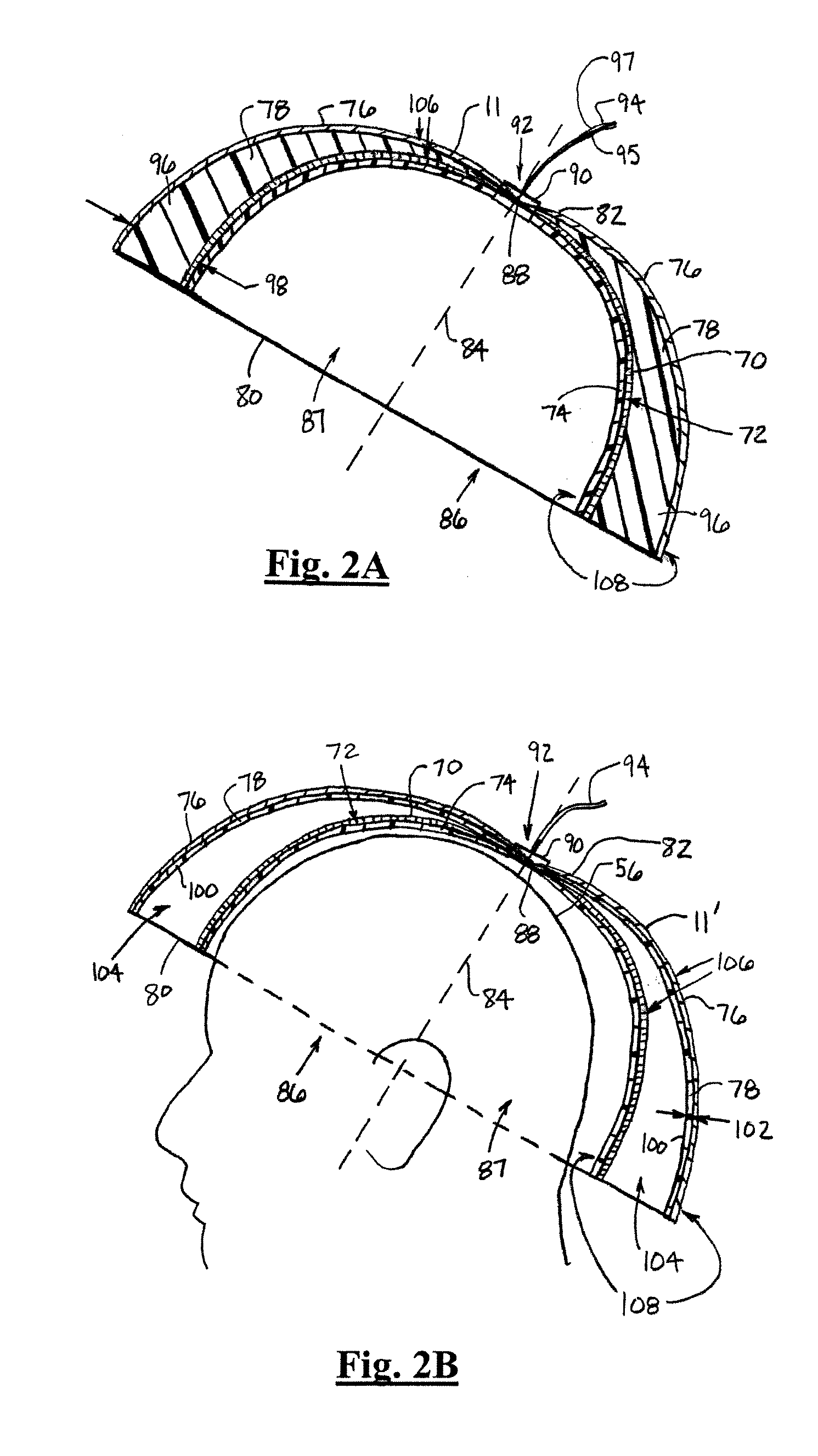Shielded dome resonator for mr scanning of a cerebrum
a dome resonator and cerebrum technology, applied in the field of mr scanning and imaging systems of cerebrum, can solve the problems of inefficient bird cages and tem coils, inability to provide power dissipation, and inability to provide patient comfort and imaging efficiency, so as to prevent parasitic coupling, improve sensitivity and electrical isolation, and improve imaging efficiency
- Summary
- Abstract
- Description
- Claims
- Application Information
AI Technical Summary
Benefits of technology
Problems solved by technology
Method used
Image
Examples
Embodiment Construction
[0034] In the following figures the same reference numerals will be used to refer to the same components. While the present invention is described with respect to an apparatus and system for magnetic resonance (MR) and spectroscopy scanning and imaging of a cerebrum, the following apparatus and system is capable of being adapted for various purposes and is not limited to scanning or imaging of a cerebrum or to the following applications: magnetic resonance imaging (MRI) systems, magnetic resonance spectroscopy systems, and other similar applications known in the art.
[0035] In the following description, various operating parameters and components are described for one constructed embodiment. These specific parameters and components are included as examples and are not meant to be limiting.
[0036] Also, in the following description the term “dome” refers to approximate shape of a device or object. The device or object has a center main portion with a first end and a second end. The c...
PUM
 Login to View More
Login to View More Abstract
Description
Claims
Application Information
 Login to View More
Login to View More - R&D
- Intellectual Property
- Life Sciences
- Materials
- Tech Scout
- Unparalleled Data Quality
- Higher Quality Content
- 60% Fewer Hallucinations
Browse by: Latest US Patents, China's latest patents, Technical Efficacy Thesaurus, Application Domain, Technology Topic, Popular Technical Reports.
© 2025 PatSnap. All rights reserved.Legal|Privacy policy|Modern Slavery Act Transparency Statement|Sitemap|About US| Contact US: help@patsnap.com



